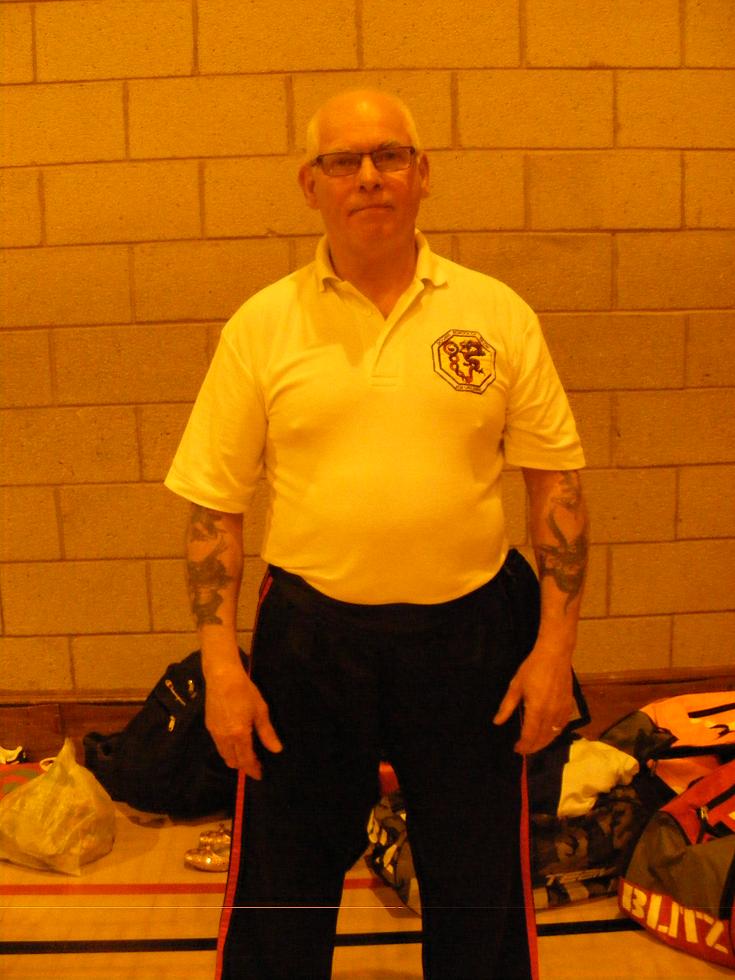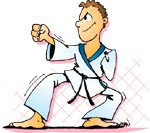Leven Shaolin Chuan Fa Kung Fu Location - 11 North Street Leven, UK, Ken Webster, 1st Degree, Black Sash
Tao Dai Loong Martial Arts Academy Location - Barry Road. Leisure Centre Lalor, Melbourne Victoria, Australia, Sifu Leon King email <mailto:sifu_leonking@hotmail.com>
Kung Fu
Approximately 3000b.c, recorded history indicates that a form of unarmed combat was practiced in China and India. In the year 2674 bc the Yellow emperor, Huang Ti was recorded as having employed Chuan Fa in battle. This was undoubtedly not the first time unarmed combat of some description was used in battle. Between 206 bc - 225 ad, the six chapters of hand fighting, Shou Po, were mentioned in the Han book of arts, Han Shu I Wen Chih. 190 - 265 ad, Hou To, a famous Chinese surgeon and discoverer of anesthetics, developed a sequence of moves for the promotion of health. These moves were later further developed into a martial art. They were based on the movements of the deer, tiger, bear, monkey and native birds of the region. These movements were a refinement of the, by then, ancient methods employed by the Chinese. From India many wandering monks brought with them their martial skills, although some believe these movements were only used as exercise. These monks arrived in China , where they spread their teachings to the population. They also shared their martial skills as well, probably to the more dedicated disciples. Around 530 ad, Tamo arrived in China . Tamo, also known as Bodhidarma in Sanskrit, or Daruma in Japanese, was a prince and warrior of Southern India . He was a Zen (Ch'an in Chinese) Buddhist and the 28th Buddha. He finally settled at a Shaolin temple in Honan province built by Emperor Hsiao Wen, in the Wei dynasty 386 - 534 AD
Tamo developed a stationary form of exercise that emphasized breathing which is believed to have been the art of Shih Pa Lo Han Sho, or 18 hands of Lo Han. Lo Han is generally used as a term describing the famous disciples of Buddha. These breathing exercises were probably the forerunner of Chi Kung. They were the foundation for almost all martial arts practiced today. They were probably never intended to be utilized as methods for fighting. They were a way for the monks to condition their bodies enabling them to endure the rigors of attaining enlightenment. In later scripts this, by then, fighting art was recorded as Chuan Fa or fist Method. Tamo, therefore, could be thought of as the catalyst or founder of Shaolin Chaun Fa, Kenpo.
During the period 520 - 1600 ad the Shaolin (Sillum in Cantonese, Shorinji in Japanese) temples became the mainstay for Chinese martial arts. Shaolin Chaun Fa, originally an internal system, later developed as external systems.
In the Sung dynasty 960 - 1279 ad, General Yuen Fei, wrote a set of twelve lessons of tensing movements, Paluanchin. These movements, believed to be for health and conditioning the body, have an obvious link to the practice of martial arts.
Around 1300 ad, Chuen Yuan, a Shaolin priest, revised the 18 hands of Lo Han to 72 movements. Yuan spread this form over China while in search of other martial artists and their knowledge. He met with Li Ch'eng and Pai Yu-Feng in Lanchow of Kansu. Pai Yu-feng was known for his martial ability. Together, in a Shaolin temple in Honan , they increased the original 18 hands and Yuan's 72 movements into 170 movements. These movements became the basis of all Shaolin Chuan Fa, becoming the five styles of Dragon, Tiger, Leopard, Snake and the Crane.
Another famous martial artist of this time particularly in the internal arts was Chang San Feng. An acupuncturist and martial artist, he is believed to have developed Dim Mak, the striking of pressure points to render a victim helpless. He is also credited with the development of Tai Chi Chuan which he devised by combining the Crane and Snake systems, masking the deadly potential of what he had created. At about this time it is believed Shaolin Chuan Fa spread further a field to Okinawa , Japan and Korea . In these countries
Chuan Fa was integrated with their own fighting methods to create more systems .

Please send any change requirements , pictures or updates to:
angela@worldbudokai.co.uk

